This is the first of two parts covering our transit through the Suez Canal aboard Marella Discovery in November 2019. This part will cover our gentle transit southwards as far the Great Bitter Lake but it won’t start at Port Said because the ship entered the canal in the very early hours of the morning while we were drunk as skunks (see: Drinking Wine On Marella Discovery) and it won’t feature the ship passing under the Al Salam Peace Bridge because we were drunk as skunks (same reason) and you won’t get to see the sunrise over Egypt from the Suez Canal on account of no alarm being set to witness the sight due to drunkenness as skunkenness but you’d probably already guessed that by now.
We were roused from our comatose states by a low, rumbling sound we hear quite often at home. No, it’s not that! How could you think that!? Living near a busy port we are very familiar with fog horns and blinked ourselves to something resembling awake to stumble across to the balcony and throw open the curtains. Our first view of the Suez Canal was an unexpected one.
The thick fog that lay draped across what we assumed was land somewhere out there also enveloped the ship in a translucent pillow muffling sight and sound, the former quite fortunate as we’d not bothered to put any clothes on before seeing what the outside world looked like from our balcony. I’m not sure what the Egyptian take on public nudity is and I hope I never find out.
I’ve only once before been in fog thicker and that was terrifying because I was driving at night on a country road at the time when it rose up out of a dip in the road and suddenly smothered my car. I resorted to using the rough edge of the road as it gradually became the dirt and gravel alongside to guide the car in what I hoped was the right direction. Lights were useless, merely serving to turn what would have been a dark grey, formless void into a bright white, formless void and if I’d been confident enough to stop the car and leave the hazards on with some hope that nothing would drive into me in the void and if I’d not feared that something might snatch me out of the void if I left the car (hey, it happens more often than you realise) then I’d have done it. As it was, at speeds sometimes approaching three miles per hour I inched my car through the dense bank of road cloud with knuckles so tight around the steering wheel they matched the colour of the fog outside until the eerie emanations became wispier and the road ahead became more visible. I turned left at a junction I’d been hoping I hadn’t missed in the fog and almost drove into a dog that was standing in the middle of the road. The countryside is really overrated and should be avoided after dark.
I don’t think the captain of Marella Discovery had any such worries on this particular day, not least because it’s not really his ship so if he hits a dog then the company can sort out the insurance claim. You can see the fogginess of the Suez Canal from both our balcony and the top deck in the video below (temporarily removed) and you can see more highlights of the passage through to the Great Bitter Lake too by which time you’ll notice that the fog has become mist and the mist has become haze and the haze has become nothing at all.
After we’d regained our senses and thrown some clothes on, cleaned teeth, and exchanged very poor memories of the evening before, we decided to spend a little time out on our balcony again before heading up for breakfast. It’s not that we weren’t hungry because we hadn’t actually had any food for close to twenty hours but rather that the fog was showing signs of thinning out already. This wouldn’t turn out to be true; as every fog expert knows, fog is not uniformly thick, instead being formed from ethereal meat within its structure bound together by veils of misty tendons.
As our ship slid into a more transparent patch of water vapour we would see the canal banks on the eastern side of Discovery backlit by the sun over the Egyptian desert landscape. That landscape that for all we knew at the time might stretch on into Asia was actually just between half and one kilometre deep and formed the central barrier between two canal waterways north of the lake towards which we were heading. If you look at a map of the Suez Canal then you’ll see that it is only a single lane at the southern end, below the Great Bitter Lake, and for a small section at the northern end near Port Said. From above the lake and upwards for nearly half the length of the canal there are two shipping lanes and this arrangement means that ships can enter the canal from the north and south at roughly the same time and pass each other at some point in this great central section where either the waterway is wide enough or where there are two canals dredged.
Our first proper sights of anything in the fog were not far from a smaller lake along the Suez Canal, Lake Timsah, also known as Crocodile Lake. It’s not named that for any wildlife in the region but rather after its eighteenth century English discoverer, Lord Michael Crocodile, fourth duke of Southend-on-Sea. Prove otherwise.
The canal bank we first set eyes upon was near a ferry crossing and the sand was decorated with a few monuments celebrating the work of the Suez Canal workers as well as a large sign proclaiming Welcome To Egypt.
Monuments along the Suez Canal would turn out to be a thing. This area of Egypt was Ismailia and in addition to monuments for the people who’d dug the canal there was one commemorating Egyptian soldiers killed during the 1973 Arab-Israeli War. The Battle of Ismailia saw outnumbered Egyptian troops with inferior armour and weaponry successfully repulse an Israeli offensive that would have severed logistical lines had it been successful, and the delaying battle lasted long enough for the UN to impose a ceasefire.
The concrete AK-47 Bayonet Monument is my favourite piece of art along the Suez for a number of reasons: firstly, I thought it was Klingon when I initially saw it and until reading up about it for this canal travelogue that’s what I was still going to go with; secondly, it commemorates a brave battle by underdogs and that’s always a good thing; thirdly, the monument was donated by North Korea who’d sided with Egypt during the war and that just tickles the “Well, isn’t that an odd thing!” nodule in my brain.
I don’t think you could ever say that the view of Egypt and the Suez Canal we had from our balcony was beautiful but it had an appeal. It was helped by the November temperature and that residual fog – warm, but not baking – and by the restricted speed through the waterway – almost silent, almost effortlessly gliding over an ice-flat surface rather than cutting through water, with only the gentlest of bow wave ripples pulsing out from the side of the ship giving it all away. We sat and watched the world go by for some time.
A low rumbling sound roused us from our reverie. Not a fog horn this time but stomachs that had processed enough alcohol from the day before and were seeking breakfast. We headed up, ate, then spent some time on the top deck seeing what we could see from a higher vantage point and what there was on the western side of the cruise ship. As it turned out, not so much, as our timing coincided with another dense pocket of fog rolling across the land and cocooning us all.
It was on the top deck that we really noticed something that had only bothered us in a minor way when we’d been on our balcony: flies. Lots and lots of flies. Or possibly just a few making themselves appear like more through clever air manoeuvres, a Diptera tribute to the spirit of the fighters of Ismailia. I’ve never credited flies with having the tactical know-how to pull off a strategic move like that, though, so I’m going to assume there really were simply loads of the little buggers.
From a photographic perspective I really like flies. I’ve never managed to get a very good photo of one but I’ve had some interesting results with macro lenses in the past and their compound eyes and the incredible colours you can see on their bodies and wings through the viewfinder is gorgeous even if the swine move before you can take a shot. From an I’m-just-trying-to-stand-still-without-having-to-swat-my-face-or-slap-my-ear-and-shout-at-that-thing-that-just-flew-into-my-eyelid perspective they’re bastards. We weren’t alone in being bothered by the flies. Swivelling around the deck of Marella Discovery it appeared as if most of the passengers were taking the chance to practice semaphore or a tightly constrained martial art of dubious effectiveness and we didn’t stay too long outside there, instead making for the shelter of our balcony once more.
My wife spent most of this time reading on her Kindle. I had my book and would often get part of the way down a page before standing up to take a photo then return to my seat only to read the same part of the page all over again. My attempts to engage in conversation about the sand alongside and the water in the canal were not overly successful and even the odd appearance of a local fishing from a small boat got barely more than an acknowledging noise from my better half when I’d try to make the encounter sound exciting.
Another fishing boat coming up.
Right.
Three people in this one.
Uh huh.
I wonder if they’re fishing for crocodiles.
Mmhmm.
We just passed Crocodile Lake, you know.
Yeah, you said.
I wonder if the fishermen ever get attacked by crocodiles.
Could happen.
I doubt it. The lake’s named after an explorer called Crocodile actually.
Mmhmm.
One of the Essex Crocodiles.
Yup.
We’ve passed the boat now. Ooh, now that’s interesting!
Mmhmm.
I think I can see another boat coming up.
We’re not religious but we do like to see religious structures when we’re travelling around the world and it wasn’t a huge surprise to spot – we assume – a mosque along the shore of the Suez Canal. It might not have been; it might just be a fashionable form of architecture. This was at the Sarabum crossing point, a place to catch ferries across both lanes of the waterway when ships like ours weren’t passing through. Indeed, we’d no sooner passed it than one ferry pulled away from the landing we could see and headed across the channel.
The sand barrier separating the northbound and southbound vessels from one another had narrowed to under a couple of hundred metres by this point and its elevation above the water level was dropping noticeably too. We were approaching the exit to the Great Bitter Lake, a saltwater lake that allows for ships transiting the Suez Canal to not only pass one another easily but also to wait in order to change their position in any convoy of ships (no, I don’t know why you’d want to do that either; “Cap’n! That ship’s following us! I’m sure!” “Right you are laddie. Let’s pull to here and let her pass. Ha! The follower has become the followed! Wait, is that another ship behind us?”) or to turn around (“Crap! Who pinned the chart to the wall upside down?”)
It wasn’t just the landscape that was changing. With the waterway opening up the last remnants of the fog and mist were finally disappearing and we started to see some of the other ships using the same bit of water as us. There were far more fishing boats here too and the colour of the water of the lake which is filled tidally from the Red Sea to the south and seasonally from the Mediterranean to the north took on a glorious turquoise shade.
In the next part of this Marella Discovery travelogue I’ll conclude our passage through the Suez Canal into the Red Sea where we would anchor awhile to enjoy the sunset (there was probably a more important and ship-based or legal reason why we anchored but just go with it) and then it’s a final day at sea before reaching our disembarkation port of Aqaba and just the small matter of a visit to the ancient city of Petra to contend with before our trip comes to an end.




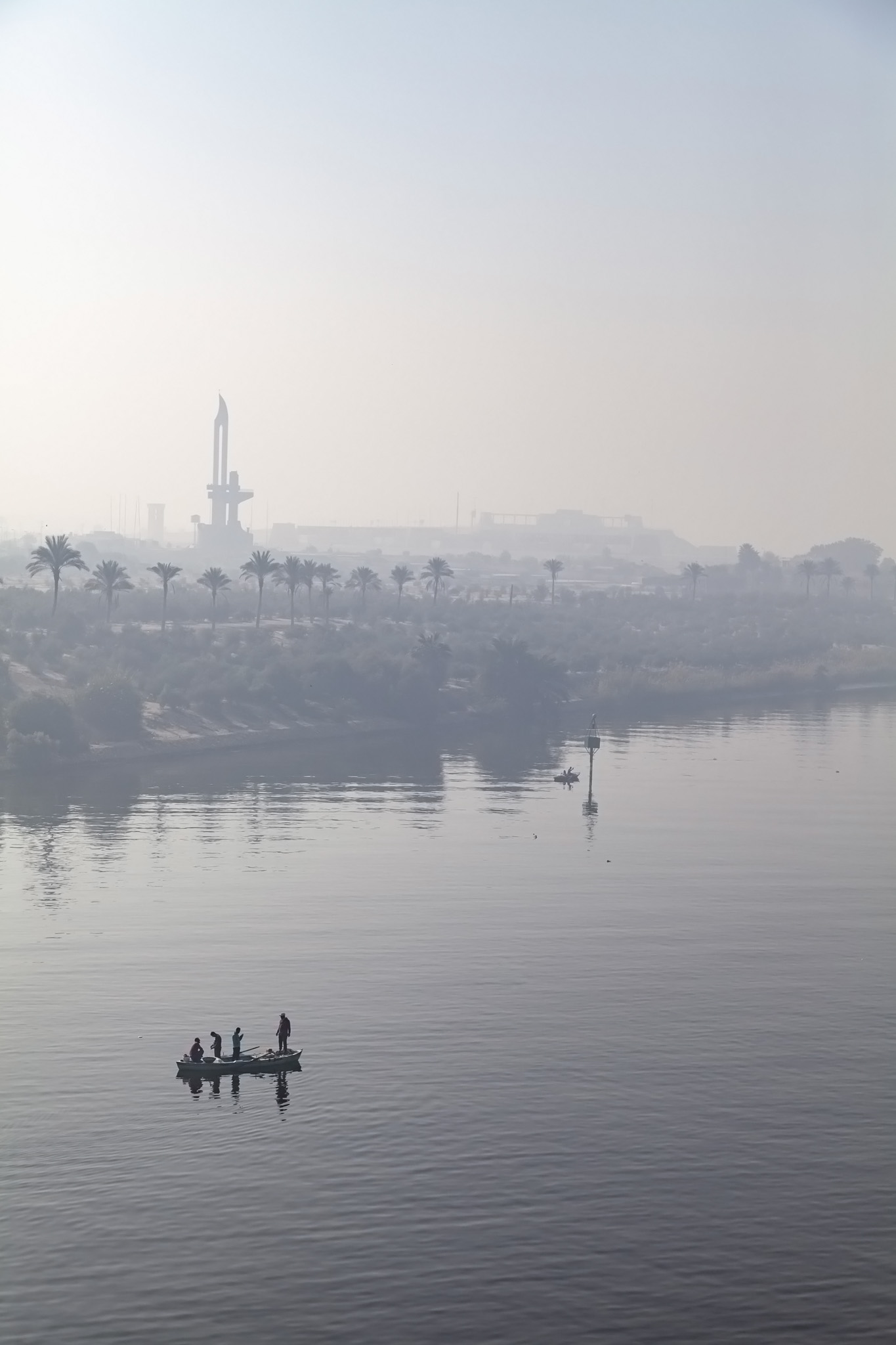












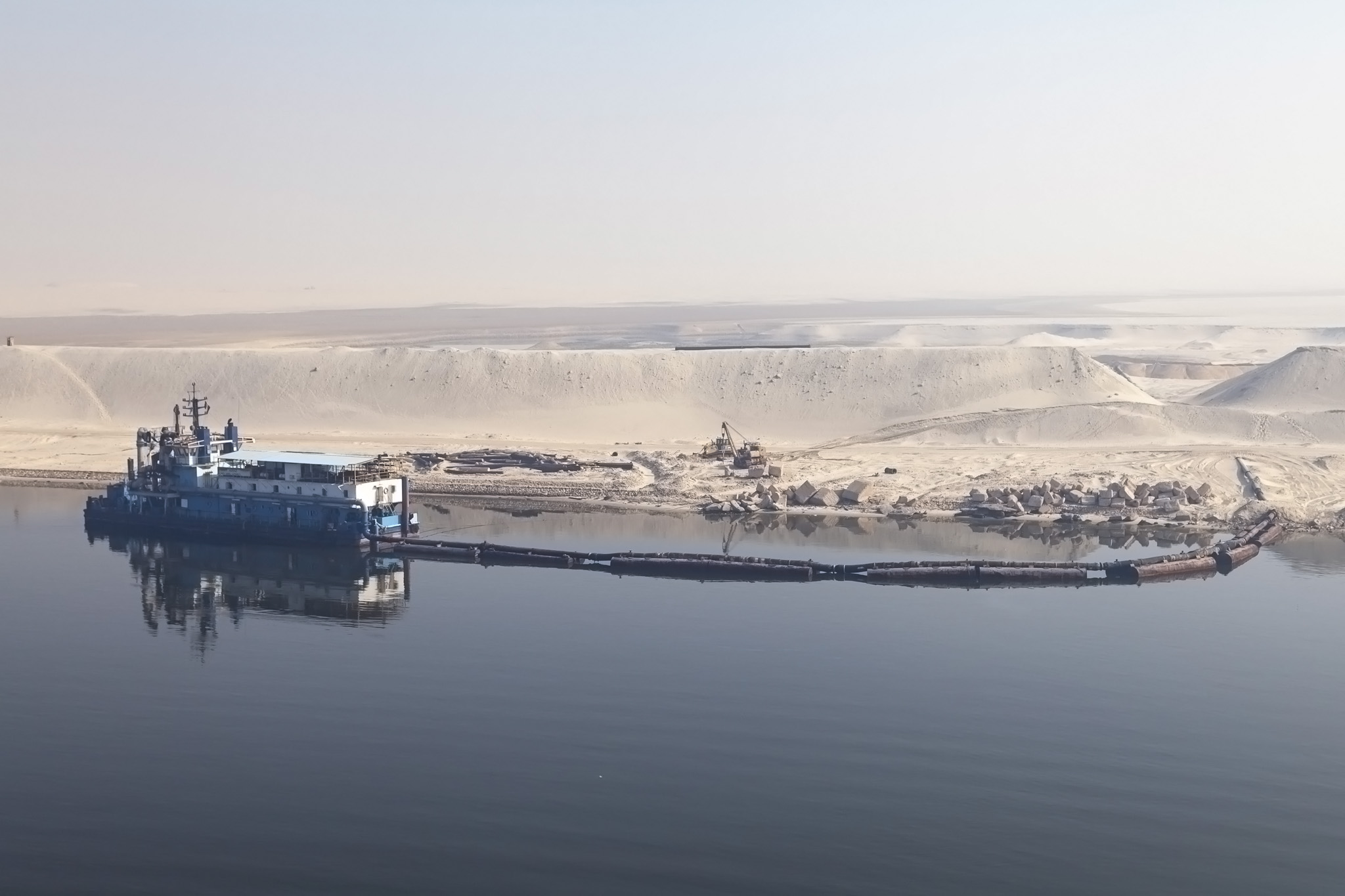


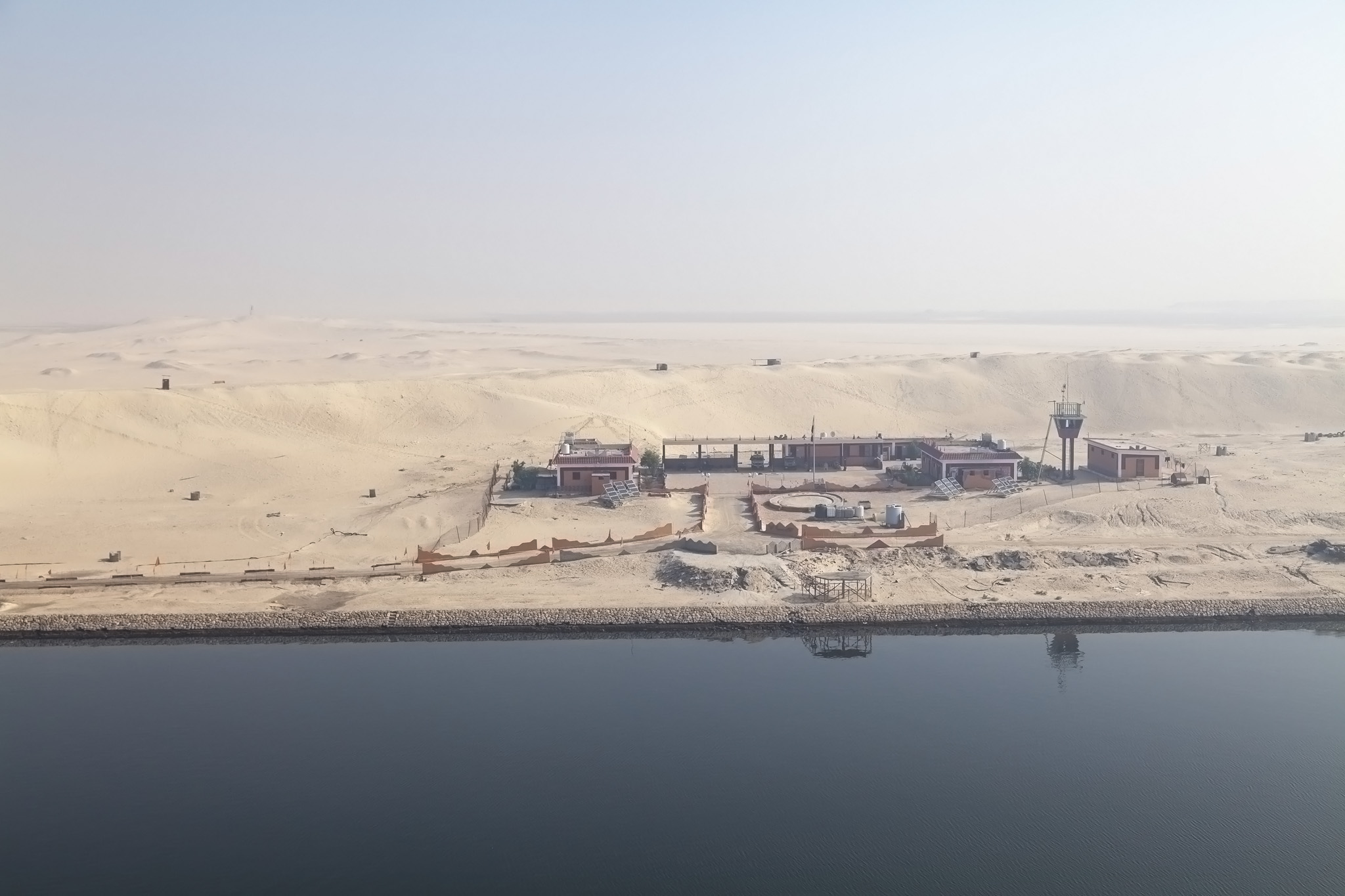













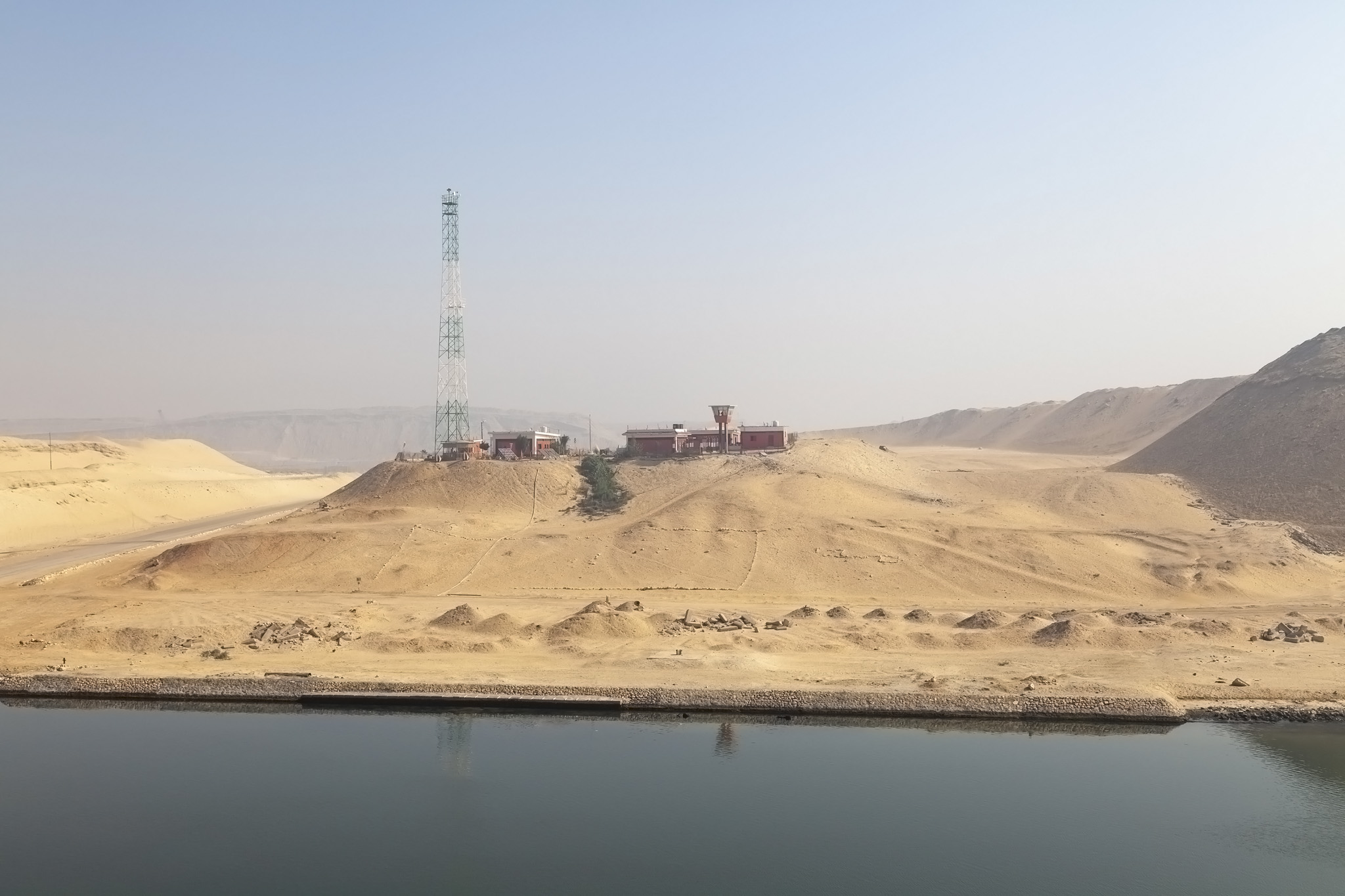
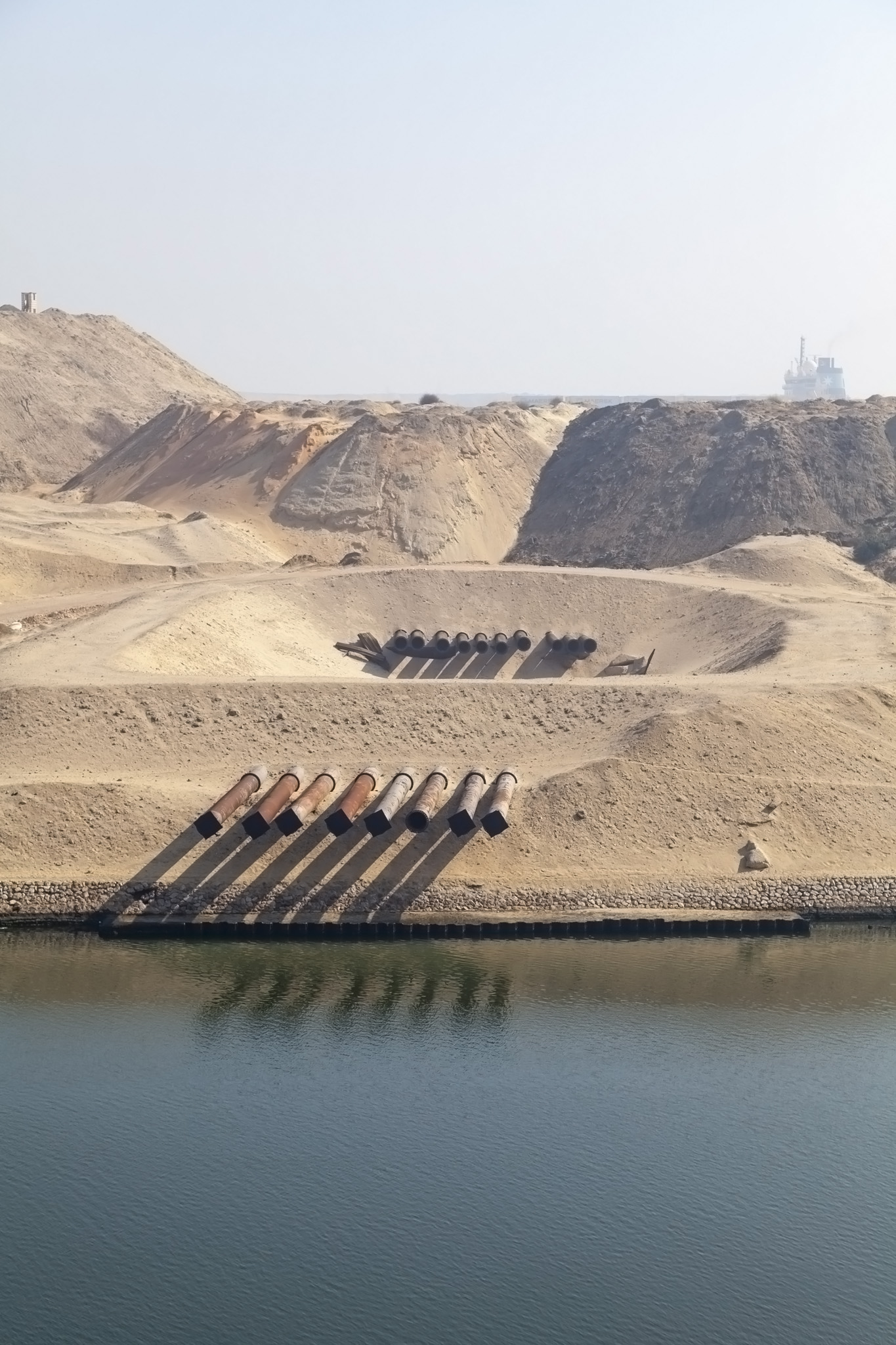



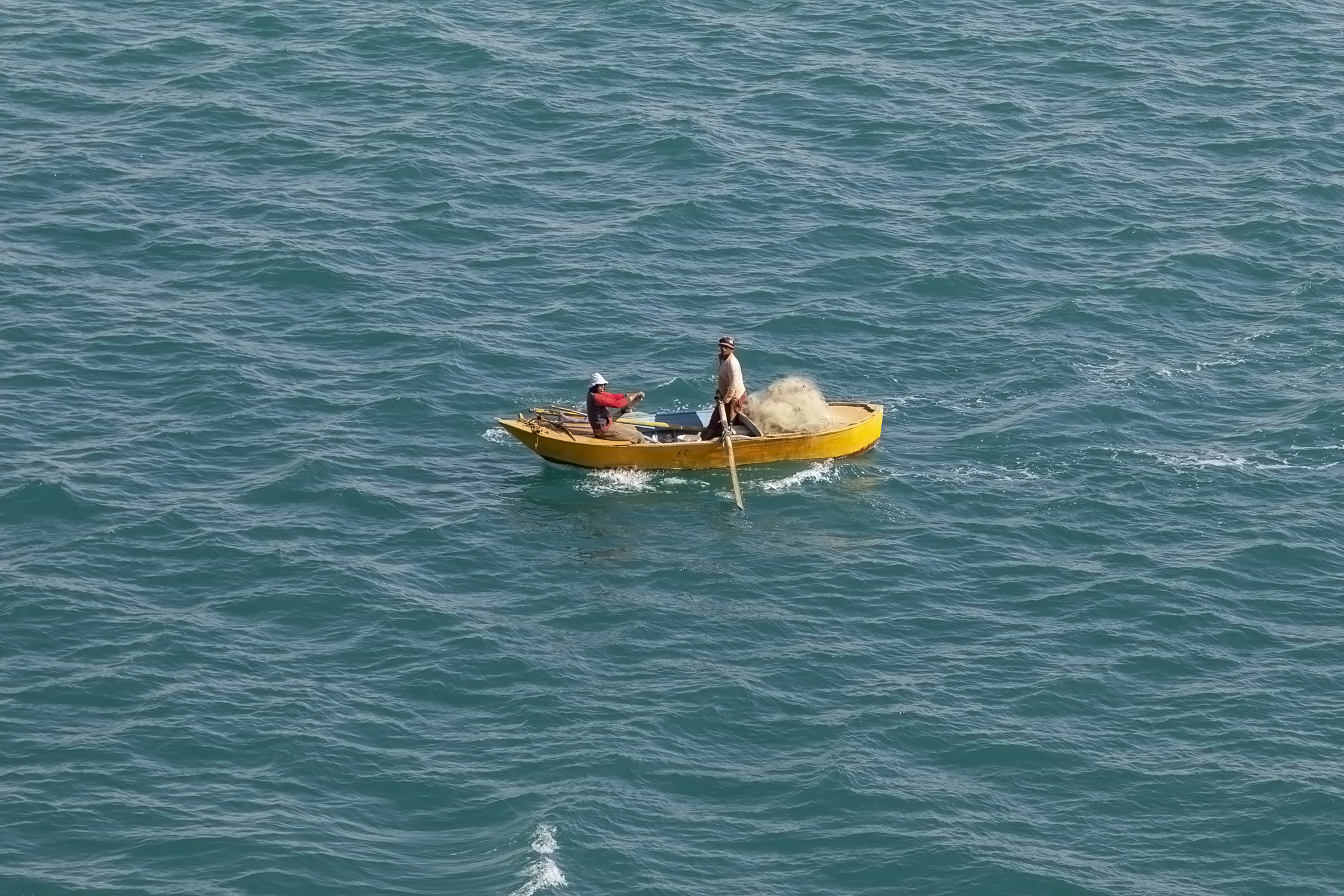




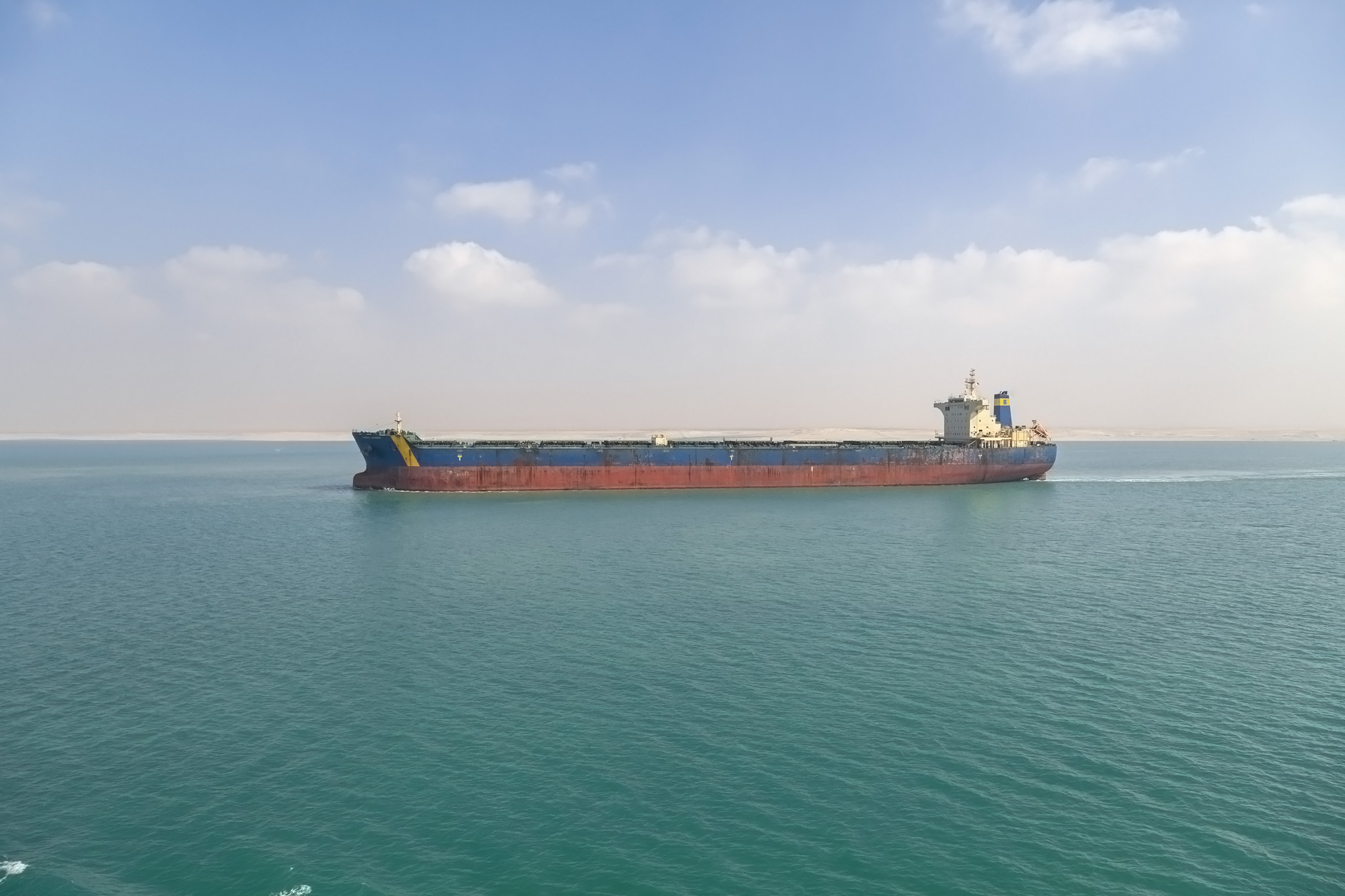






Very well-written article. Even mired in fog, you colorfully took the reader along with you.
Welcome to Egypt, indeed. Thank you for not hitting any dogs in the canal ????